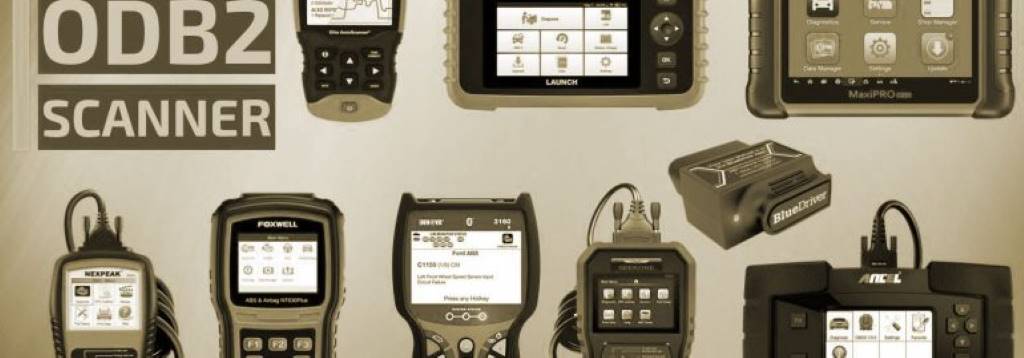Car troubles can strike at any moment, leaving you stranded with a flashing “Check Engine” light and no clue what’s wrong. Gone are the days when only professional mechanics could diagnose car issues. Today, OBD2 scanners are revolutionizing DIY car repairs, empowering urban garage mechanics to troubleshoot problems like pros.
With the rise of smart diagnostic tools, more car owners are taking maintenance into their own hands. Whether you’re a weekend warrior or a budding mechanic, having the right OBD2 scanner can save you time, money, and trips to the repair shop.
In this guide, we’ll explore:
- Why OBD2 scannersare a must-have for DIY mechanics
- The best car diagnostic toolsfor urban garages
- Key features to look for in an OBD2 code reader
- How these tools enhance vehicle maintenance
- Top trending models in 2025
By the end, you’ll know exactly which automotive scanner fits your needs—and how to use it like a pro.
Why Every DIY Mechanic Needs an OBD2 Scanner
1. Instant Access to Your Car’s Health
Modern vehicles are packed with sensors that monitor everything from engine performance to emissions. When something goes wrong, the on-board diagnostics (OBD) system logs an error code. An OBD2 scanner reads these codes, translating them into actionable insights.
Instead of guessing why your check engine light is on, a quick scan reveals the exact issue—whether it’s a faulty oxygen sensor, misfiring cylinder, or loose gas cap.
2. Save Money on Mechanic Visits
A single trip to the mechanic can cost hundreds just for diagnostics. With an OBD2 code reader, you can:
- Identify minor issues before they become costly repairs
- Clear false alarms (like a loose fuel cap triggering an emissions warning)
- Verify if a repair fixed the problem by resetting error codes
3. Empower Yourself with Data
Advanced car diagnostic tools provide real-time data on:
- Engine RPM
- Fuel efficiency
- Coolant temperature
- Throttle response
This helps you optimize performance and catch problems early. Explore How to Test a Car Battery with a Multimeter.
Top Must-Have Diagnostic Tools for DIY Mechanics
1. Basic OBD2 Scanners (Entry-Level Code Readers)
Best for: Beginners, quick code checks
Key Features:
- Reads and clears trouble codes
- Compact and easy to use
- Affordable (under $50)
Top Pick: BlueDriver Bluetooth OBD2 Scanner
- Syncs with your smartphone
- Provides repair reports and verified fixes
2. Advanced OBD2 Scanners (Professional-Grade Tools)
Best for: Enthusiasts and semi-professionals
Key Features:
- Live data streaming
- ABS/SRS diagnostics
- Smog check readiness
Top Pick: Autel MaxiCOM MK808
- Full-system diagnostics
- Bi-directional control (test components remotely)
3. Wireless Bluetooth OBD2 Adapters
Best for: Tech-savvy users who prefer apps
Key Features:
- Connects to Android/iOS via Bluetooth
- Tracks fuel economy and driving habits
Top Pick: FIXD OBD2 Scanner
- Simple app interface
- Maintenance reminders
4. OEM-Level Diagnostic Tools (For Serious DIYers)
Best for: Advanced users and mechanics-in-training
Key Features:
- Full ECU programming
- Key coding and module reset
Top Pick: Launch X431 V+
- Works with most car brands
- Advanced coding functions
Key Features to Look for in an OBD2 Scanner
Not all car diagnostic tools are created equal. Here’s what to consider:
1. Compatibility
- Ensure it works with your car’s make, model, and year.
- Look for OBD2 compatibility(most cars post-1996 support it).
2. Live Data Streaming
- Monitors engine stats in real time—crucial for troubleshooting intermittent issues.
3. Code Definitions & Repair Tips
- Some scanners only show codes; the best ones explain what they mean and suggest fixes.
4. Wireless Connectivity
- Bluetooth/Wi-Fi models allow smartphone integration for better data tracking.
5. ABS & Airbag Diagnostics
- Higher-end models can scan ABS brakes and SRS airbag systems, not just engine codes.
Check out BlueDriver OBD-II Scanner.
How to Use an OBD2 Scanner for DIY Repairs
Step 1: Locate the OBD2 Port
- Usually found under the dashboard near the steering wheel.
Step 2: Plug In the Scanner
- Turn the ignition to “ON” (engine off).
Step 3: Read the Codes
- Follow the scanner’s prompts to retrieve diagnostic trouble codes (DTCs).
Step 4: Interpret the Codes
- Use the scanner’s database or Google to decode them (e.g., P0420 = Catalyst System Efficiency Below Threshold).
Step 5: Fix the Issue or Seek Help
- Some fixes are simple (tightening a gas cap), while others need professional attention.
Step 6: Clear the Codes & Test Drive
- After repairs, reset the codes to see if the issue is resolved.
Trending OBD2 Scanners in 2025
- BlueDriver Pro– Best for smartphone integration
- Autel MaxiAP AP200– Affordable pro-level features
- Innova 3160g– Top-rated for beginners
- Foxwell NT301– Reliable mid-range option
- Launch CRP129X– Full-system diagnostics
Final Thoughts: Why Your Garage Needs an OBD2 Scanner
Whether you’re a DIY car repair enthusiast or just want to avoid unnecessary mechanic fees, an OBD2 scanner is a game-changer. From basic code readers to advanced diagnostic tools, there’s a perfect fit for every skill level and budget.
Ready to take control of your car’s health? Invest in a high-quality OBD2 scanner today and join the growing community of urban garage mechanics who fix cars smarter, not harder!
Which scanner are you considering? Drop your questions in the comments below!




